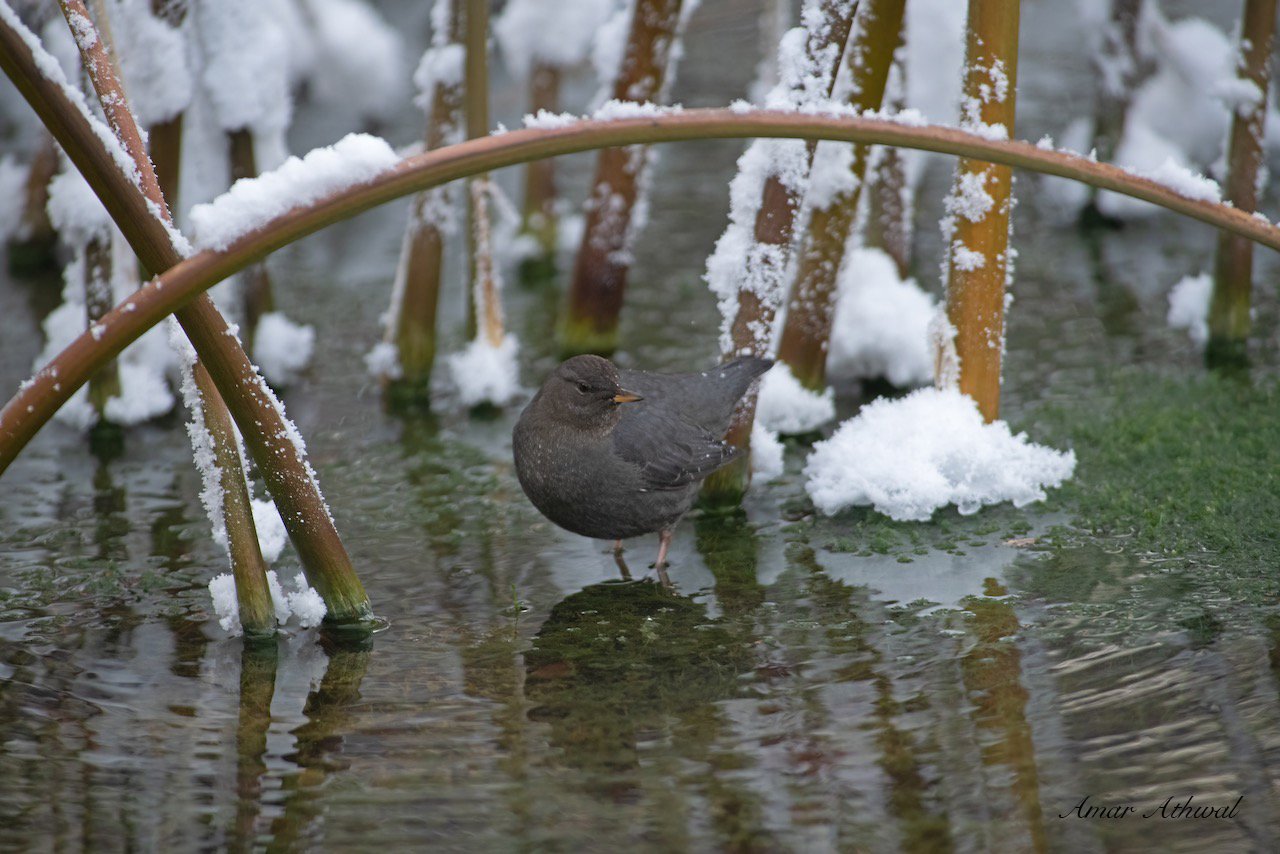The birds got it all figured out how not to get a frostbite on their legs and feet. Feathers help to maintain core body temperature, their legs and feet are mostly tendons and bones with some muscle or nerve tissue. Therefore, avoiding the high cost of keeping the legs and feet the same temperature as the core. The blood is supplied all the way to the foot, using a countercurrent heat exchange system. Cool blood returns from the foot traveling through veins surrounding the arteries that are sending warm blood from the body to the foot. The cool blood is warmed before reaching the body. Just enough heat reaches the foot to prevent it from freezing. The way this network of arteries is wired from the heart to the feet is called rete mirable or “wonderful net”.
Another way to keep the legs and the feet warm is by perching and covering them with their feathers. As well, we have all seen this, by standing on one leg while the other is tucked into their feathers. Switching between the two as needed. So if you see a waterfowl standing on one leg on the ice on a cold winter day, let them be and go home, do a tree pose and then enjoy your favorite hot chocolate.
